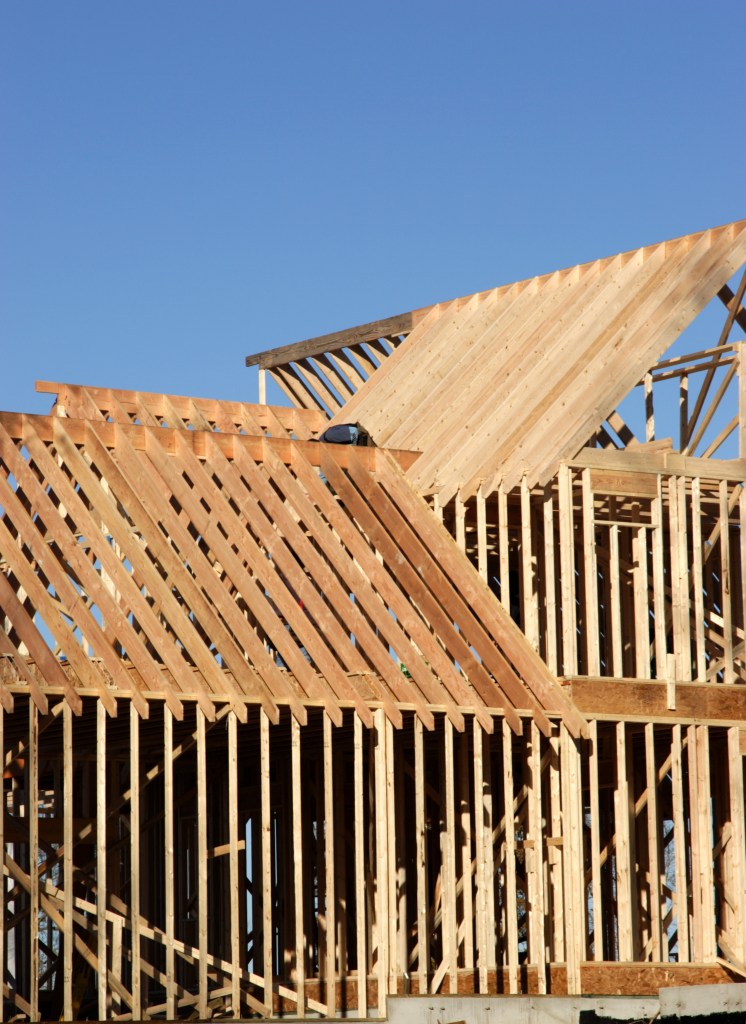Often, home building and construction experts will discuss the pitch of a home’s roof. When someone mentions the pitch of a roof, they’re referring to the measurement of a roof’s slope expressed as a ratio. Although there is no one particular standard roof pitch used on all sloping ceilings, factors such as roofing materials and the local environment and climate can aid in determining the suitable range of angles for a specific structure.
There are countless varieties of roof pitches used throughout the world, depending on the home style and region. In order to learn how to determine roof pitch easier, this guide will help you understand the standard roof pitch and how to calculate it.

Determine a roof’s pitch
You measure roof pitch by employing a ratio of the amount of the roof’s vertical rise over a corresponding horizontal distance, which is called the run. Additionally, you determine roof pitch by calculating the run of 1 foot of measurement or by 12 inches.
The ratio determines how much the roof rises for every foot of its run. Namely, if the roof rises 4 inches for every 1 foot of the run, the pitch would be shown as ratios that read as follows: 4/12, 4:12, 4 over 12, and 4 in 12.
Establish standard roof pitch
To establish how to determine the roof pitch standard, start with the 4/12 pitch measurement as the typical roof pitch for a traditional house. From there, assume anything between 4/12 and 9/12 is the general standard for how to determine roof pitch.
If your pitch is lower than the standard, it will have a smaller angle and your roof will be called a low-slope roof. Some minor slopes, particularly anything less than 2/12, would be deemed a flat roof. In contrast, any measurement beyond 9/12 is called a steep slope.
How to best measure roof pitch
When calculating how to determine roof pitch, it’s best to start at the gable end of the roof. Beginning at the gable end, take precise measurements using a 24-inch level, which will be the most useful for measurements. Then, collect measurements from the hip roofline. In order to determine the pitch of your roof, follow these steps:
- Rest one end of the level on your roof.
- Perpendicular to your roof, extend the level out while maintaining a flat surface.
- Moving from the opposite end of the level to your roof, take a straight measurement.
- Divide this figure by 2, given that this measurement was obtained at 24 inches rather than 12 inches. For instance, if the drop is 14 inches as measured from a 24-inch level, the determining roof pitch would be 7:12.
Roof material limitations
When determining how to measure a roof pitch, understand that not all roofing materials are suitable for all. Furthermore, many materials won’t work perfectly with roofs that have extreme slopes and are low or steep in gradient.
Ideally, you shouldn’t use asphalt shingles to cover low-slope or flat roofs, since water can enter the roofing material much easier on a shallow pitch roof. Asphalt shingles are far more suitable for roofs with typical pitches that range from 4/12 to 9/12.
Roof materials that function well on low-slope roofs include tar-and-gravel or rubber membranes. It’s recommended not to use these types of materials on conventional or steep slope roofs. The installation is more complex, and the material imperfections are highly evident on a steeply slanted roof. For steep roofs, both tile and shingles are the materials that work the best.
Considering regional climate
The climate of a regional area in which a home is built may also limit certain roof pitches. For this reason, it’s imperative to understand that conventional types of roofs in a region aren’t just style trends, but necessities per the climate conditions of that region.
For illustration, low-slope roofs can be problematic in areas with substantial snow accumulation due to an immense mound of snow that can become heavy. This situation can cause overbearing on the roof, which can lead to a roof collapse in extreme instances. Snow on steep slope roofs is likely to slide down to the eaves, causing damage to the top and creating a threat to those below from falling ice and snow.
Final thoughts on determining roof pitch
Determining a roof’s pitch can be much easier to measure than the math involved may make it seem. When measuring a roof’s pitch, understanding the rise and run of the roof is vital to measure out the standard roof pitch for the home.
It’s also essential to keep in mind that there are limitations and climate considerations to factor into determining roof pitch. A roof style is not just one aspect that determines the roof of a home. Factoring the roof pitch and other external conditions helps ensure a sturdy, secure, and stylish roof for years to come.




